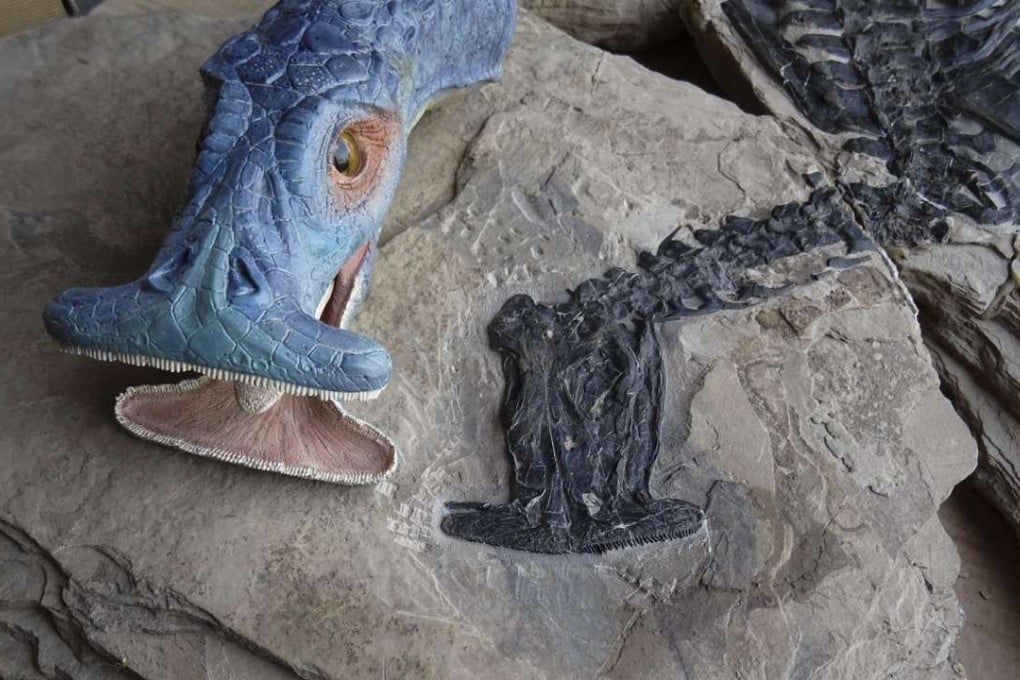Chinese fossil of hammerhead marine reptile so weird its finders were ‘blown away’
Crocodile-sized plant eater dug up in Yunnan used its chisel-shaped teeth to scrape algae off rocks, scientists figure out after making model of its jaw using children’s clay and toothpicks

Two years ago, scientists in Yunnan province in southwest China found a peculiar-looking, beautifully preserved, 242-million-year-old marine reptile the size of a crocodile with a mouth like a zipper.
Nicholas Fraser, keeper of natural sciences at National Museums Scotland, says that he, along with Professor Li Chun, of the Institute of Vertebrate Palaeontology and Palaeoanthropology in Beijing, and Olivier Rieppel, a curator at the Field Museum in Chicago, puzzled over two newer specimens for 10 to 14 days before they had a breakthrough.
“We were blown away by how weird it was. We weren’t expecting to see anything like this … Although it’s well articulated, it’s still compressed a bit,” Fraser says. “So we went and bought some children’s clay…and we bought some toothpicks.”

That was the only way they could think of to figure out how the animal’s jaw worked. They realised that, unlike almost all other marine reptiles, this one, called Atopodentatus unicus, ate plants, making it the oldest herbivorous marine reptile in the fossil record. The only plant-eating marine reptiles alive today are green sea turtles and marine iguanas.